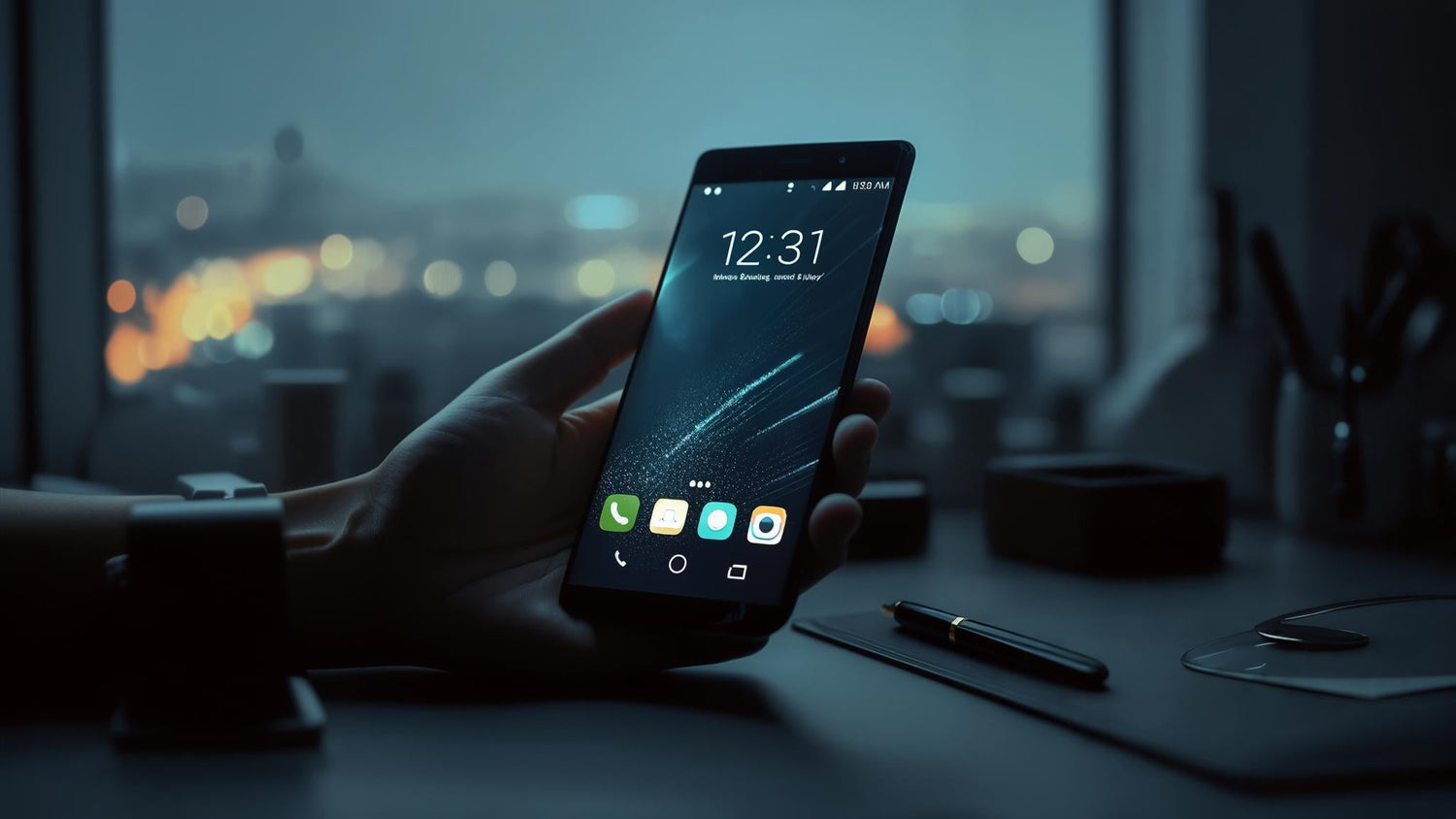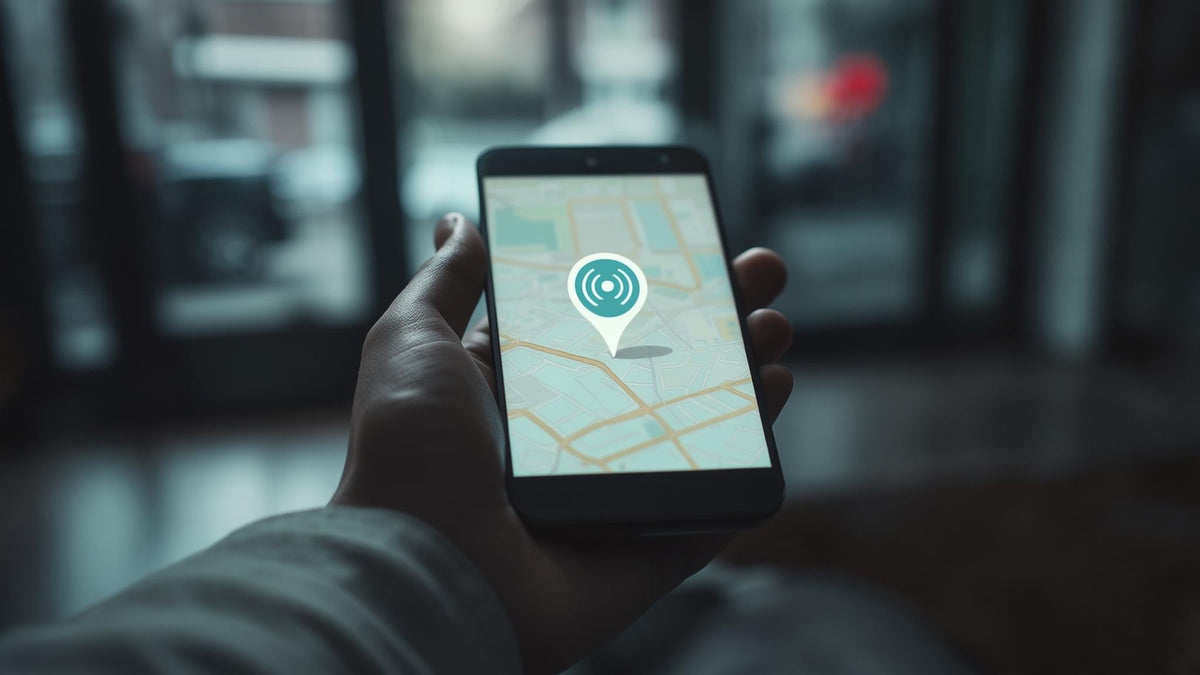Staring at your locked Android screen while your stress levels hit the roof? I get it. There's nothing quite like that sinking feeling when you realize you can't remember your PIN, your fingerprint sensor decided to quit, or your phone just completely lost its mind. Let me walk you through every method I know that actually works.
Whether you forgot your password, your screen is cracked, or your phone is having a complete meltdown, we're going to get you back in. Fair warning though - with Google having removed the option to recover accounts through email prompts after multiple failed attempts, factory reset has become the go-to solution when you can't remember your credentials.
And hey, while we're fixing this mess, let's talk prevention. Physical damage causes a lot of these lockout situations, so investing in the most protective phone cases might save you from this headache next time.
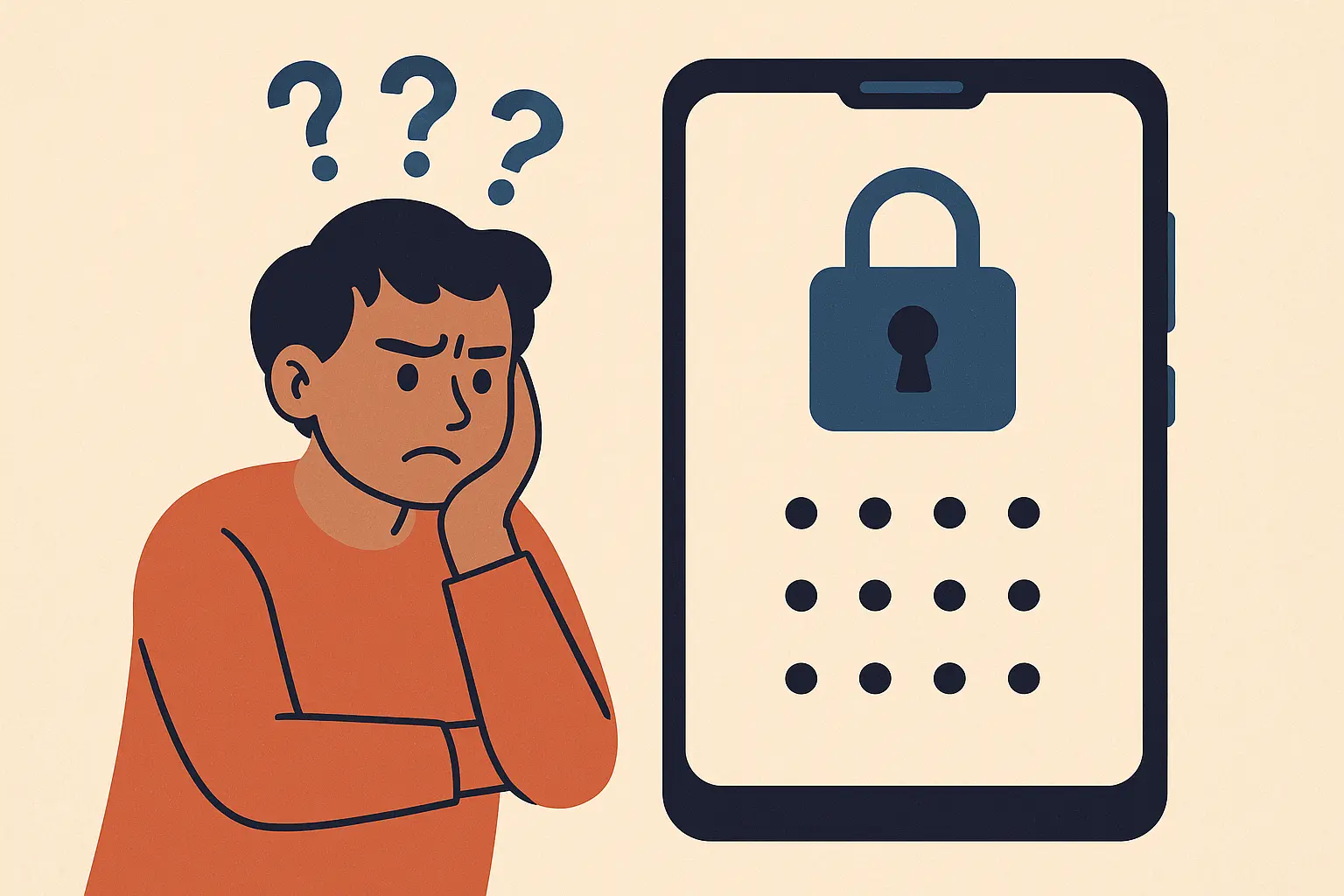
Table of Contents
Understanding Why Your Android Gets Locked (And What You're Really Dealing With)
The Nuclear Option: Factory Reset Methods That Actually Work
Smart Alternatives When You Don't Want to Lose Everything
Getting Your Life Back: Post-Reset Recovery and Future-Proofing
Final Thoughts
TL;DR - The Quick Fix List
Hardware button combinations (Volume Down + Power) work on most phones even when they're completely dead to you
Google's Find My Device can nuke your phone remotely if it's connected to the internet
Safe mode might let you sneak in through the back door without losing everything
ADB commands work only if you were smart enough to enable USB debugging beforehand (spoiler: most people weren't)
Third-party unlock tools exist but they're sketchy as hell
Prevention beats cure - set up backup methods and Smart Lock before you need them
Good phone protection prevents the drops and damage that cause half these problems
Understanding Why Your Android Gets Locked (And What You're Really Dealing With)
First, you need to figure out what type of disaster you're dealing with. Different problems need different solutions, and using the wrong fix can make things worse or nuke data you didn't need to lose.
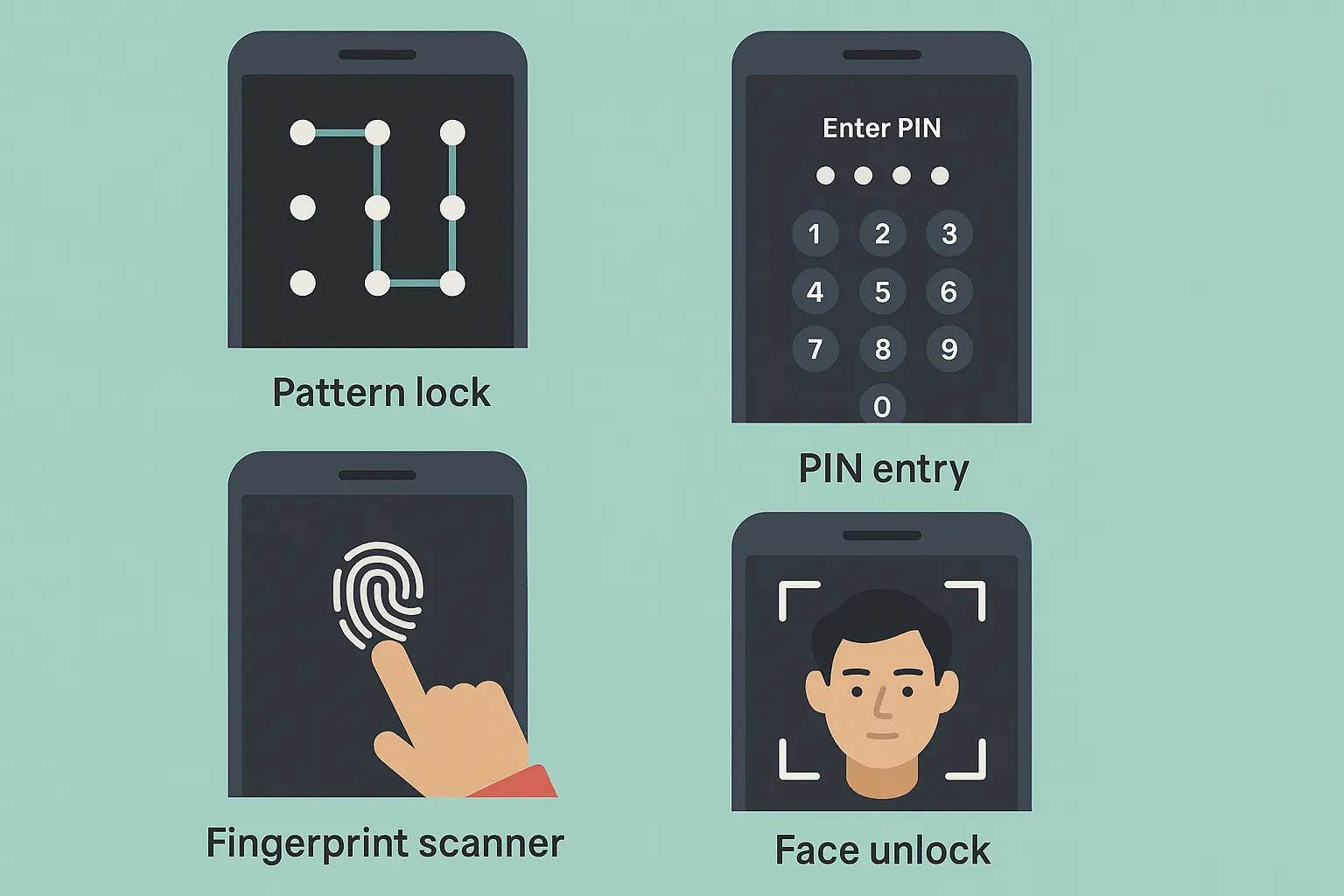
Why Your Phone Decided to Hate You Today
Your Android can lock you out in several delightful ways, each with its own special flavor of frustration. Knowing which one you're dealing with saves you from wasting time on fixes that won't work.
Pattern Lock Failures That Make You Question Everything
Pattern locks are great until you draw the wrong squiggles five times and suddenly you're locked out for 30 seconds. Then a minute. Then longer. And guess what? Eventually you'll need that Google password you haven't typed in years.
Here's the kicker - "bypassing a forgotten pattern has become harder with Android's evolving security" according to BreakingAC. Features like Factory Reset Protection and encryption killed off most of the old hacks that worked on older devices.
My friend Sarah learned this the hard way when she switched from her usual 4-dot pattern to a fancy 9-dot one and promptly forgot it. After 5 failed attempts, her Samsung Galaxy locked her out for 30 seconds. By the 10th attempt, she faced a 30-minute timeout and needed her Google password - which she hadn't used in months since everything auto-logs in now.
PIN and Password Lockouts (The Classic Nightmare)
Numeric PINs and passwords follow the same cruel lockout rules, but password recovery drags you through Google's verification maze. Even if you remember your password, you might need to verify through email addresses or phone numbers you haven't touched in years.
When Your Fingerprint Sensor Gives Up on Life
Fingerprint and face recognition usually fall back to PIN or password after they fail. But here's what really sucks - when the sensor breaks, you're stuck with whatever backup method you set up months ago and probably forgot about.
Hardware Problems vs Software Meltdowns
Figuring out whether your phone is having a hardware tantrum or a software breakdown changes everything. Hardware issues might need professional help, while software problems usually have DIY fixes that won't cost you anything.
Problem Type |
Common Symptoms |
DIY Solution Available |
Professional Help Needed |
|---|---|---|---|
Software Lock |
Screen responds, buttons work, just can't remember password |
Yes - Factory reset methods |
No |
Hardware Button Failure |
Power/volume buttons don't respond |
Limited - Try alternative button combos |
Yes - Button replacement |
Screen Damage |
Cracked/unresponsive touchscreen |
Yes - Hardware button reset |
Possibly - Screen replacement |
System Corruption |
Random reboots, frozen screens |
Yes - Recovery mode reset |
No |
Sensor Malfunction |
Fingerprint/face unlock not working |
Yes - Use backup PIN/password |
No |
Software Locks You Can Actually Fix
Software-based locks come from forgotten passwords, corrupted user data, or your phone having a digital nervous breakdown. Good news - these usually respond to the reset methods coming up, and you won't need special tools or a computer science degree.
Hardware Failures That Complicate Your Life
Physical damage to your screen, buttons, or sensors creates lock situations that need different approaches. Sometimes you'll need external tools or a repair shop, especially if your power button decided to retire.
System Corruption - When Your Phone Loses Its Mind
Sometimes your phone looks locked but it's actually just having a software meltdown. The operating system gets corrupted and creates phantom locks where everything seems fine but nothing works right. These need different fixes because standard unlock methods won't address the real problem.
What Gets Nuked and What Survives
Before you nuke your phone back to factory settings, you need to know what disappears forever and what you can get back. This knowledge helps you decide if the cure is worse than the disease.

Checking Your Cloud Backup Status
Your Google account sync status, photo backup settings, and app data sync determine how much you can recover after hitting the reset button. Most people don't realize how little of their stuff is actually backed up until it's too late.
Local Storage - The Stuff That's Really Gone
Downloaded music, local photos that never made it to the cloud, app-specific files, and anything stored only on your phone might vanish forever. Check what you've got backed up before proceeding with nuclear options.
The Nuclear Option: Factory Reset Methods That Actually Work
Factory reset is the sledgehammer approach - it wipes everything and starts fresh. Sounds brutal, but it's often your most reliable option when gentler methods fail. Let me show you multiple ways to nuke your phone back to life.
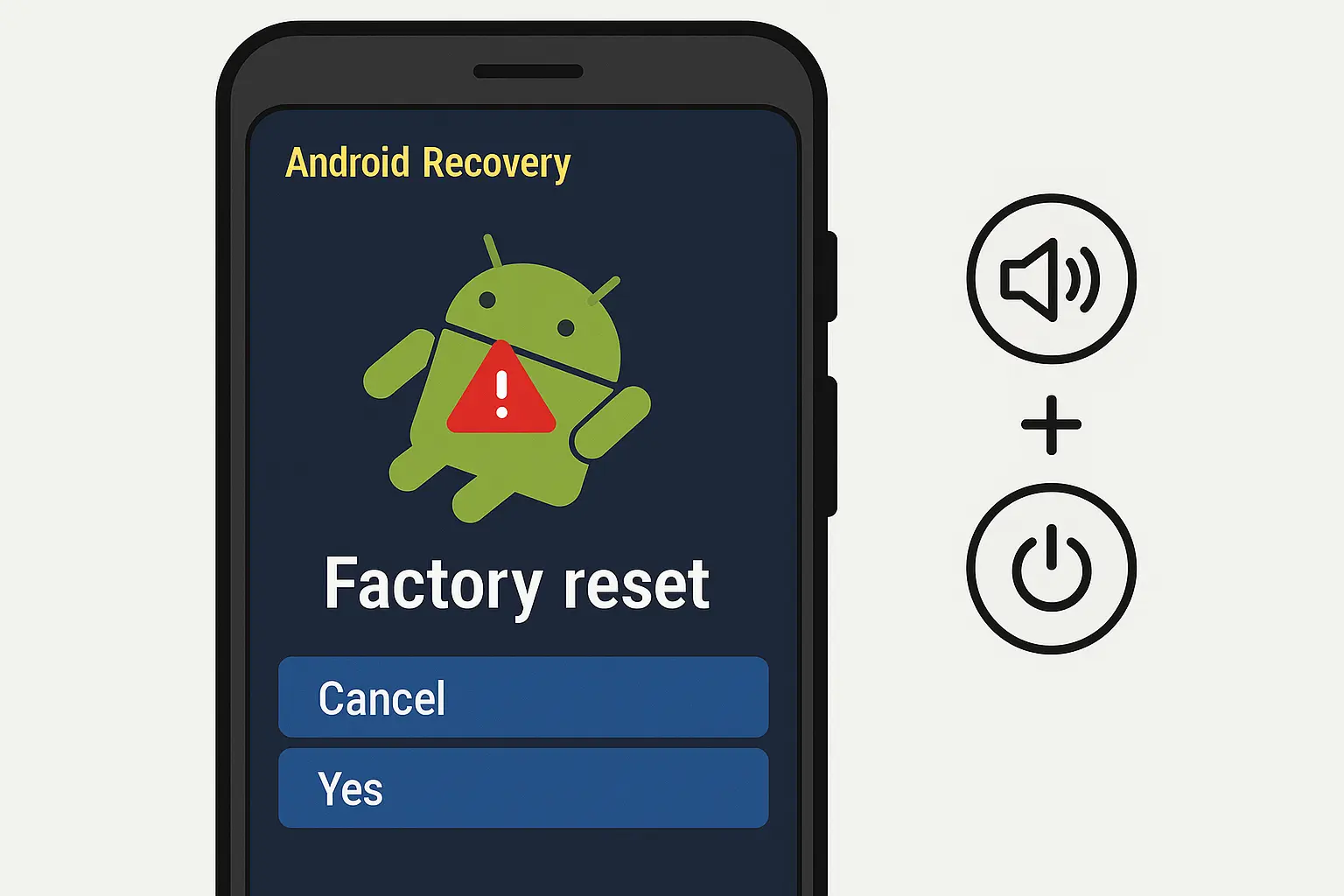
Hardware Button Magic - The Method That Almost Always Works
Most Android phones have a secret backdoor through hardware buttons that completely bypasses software locks. This works even when your touchscreen gave up or your phone won't boot normally.
The Standard Recovery Mode Process
Here's the basic drill that works on most phones:
Power off completely (hold power button for 10+ seconds if it's being stubborn)
Hold Volume Down + Power buttons for 10-15 seconds
Let go when the recovery menu pops up
Use volume buttons to navigate to "Factory Reset" or "Wipe Data"
Hit power button to confirm
Wait 5-15 minutes for the magic to happen
Select "Reboot System Now"
My buddy Mark's OnePlus 8 went completely black after a botched software update. Screen was dead, but holding Volume Down + Power for 12 seconds brought up recovery mode. Using just the volume and power buttons, he found "Wipe data/factory reset" and had his phone working again in 20 minutes.
Brand-Specific Button Combinations
Different manufacturers like to be special snowflakes with their button combinations. Samsung might need Volume Up + Power + Home on older models, while some LG phones want Volume Down + Power + Home. If the standard method doesn't work, check your specific model online.
Manufacturer |
Button Combination |
Special Notes |
|---|---|---|
Samsung Galaxy |
Volume Up + Power + Home (older models) |
Newer models: Volume Up + Power |
Google Pixel |
Volume Down + Power |
Most reliable combination |
LG |
Volume Down + Power + Home |
Release Power when logo appears |
HTC |
Volume Down + Power |
Hold until recovery screen |
Motorola |
Volume Down + Power |
Enter Fastboot first, then Recovery |
OnePlus |
Volume Down + Power |
Similar to Google Pixel method |
Xiaomi/MIUI |
Volume Up + Power |
May require unlocked bootloader |
When Hardware Reset Throws a Tantrum
Sometimes the standard button dance fails because your buttons are broken, battery's dead, or the recovery partition got corrupted. If buttons aren't responding or the recovery menu won't show up, you'll need to try other approaches or get professional help.
Google's Remote Reset - Your Digital Lifeline
Google's Find My Device lets you factory reset your locked phone from any web browser. Super convenient when it works, but it has some annoying requirements.
What You Need for Remote Reset Magic
Your phone needs to be signed into a Google account, have location services on, and be connected to Wi-Fi or cellular data. If any of these boxes aren't checked, this method is useless.
Here's how to do it:
Go to android.com/find on any computer or device
Sign in with the Google account linked to your locked phone
Pick the locked device from the list
Click "Erase Device"
Confirm and wait for it to happen
Your phone resets when it connects to the internet
Worth noting that "the Google Find My Device service no longer allows you to change your PIN or password on your device" according to ZDNet. Factory reset is basically your only remote option now for most non-Samsung devices.
Why Remote Reset Sometimes Fails
Remote reset craps out when phones are offline, in airplane mode, or someone else already reset your device. Timing matters - if someone beats you to the reset button, this method becomes worthless.
Manufacturer Recovery Tools - The Professional Approach
Major phone makers provide their own software tools that can reset devices through USB connections to computers. These work when other methods fail, but they require some tech knowledge to use safely.
Samsung's Smart Switch and Odin
Samsung devices can use Smart Switch for basic recovery or Odin for hardcore firmware restoration. Smart Switch is user-friendly for common issues, while Odin is for when things get really ugly.
LG's Recovery Ecosystem
LG has Mobile Switch for basic resets and Flash Tool for professional-level firmware recovery. These tools can often revive devices that don't respond to standard reset methods.
Smart Alternatives When You Don't Want to Lose Everything
Factory reset isn't always necessary. Sometimes you can fix lock issues while keeping most of your data through alternative approaches. These methods need more tech knowledge but can save you hours of setup time and prevent permanent data loss.
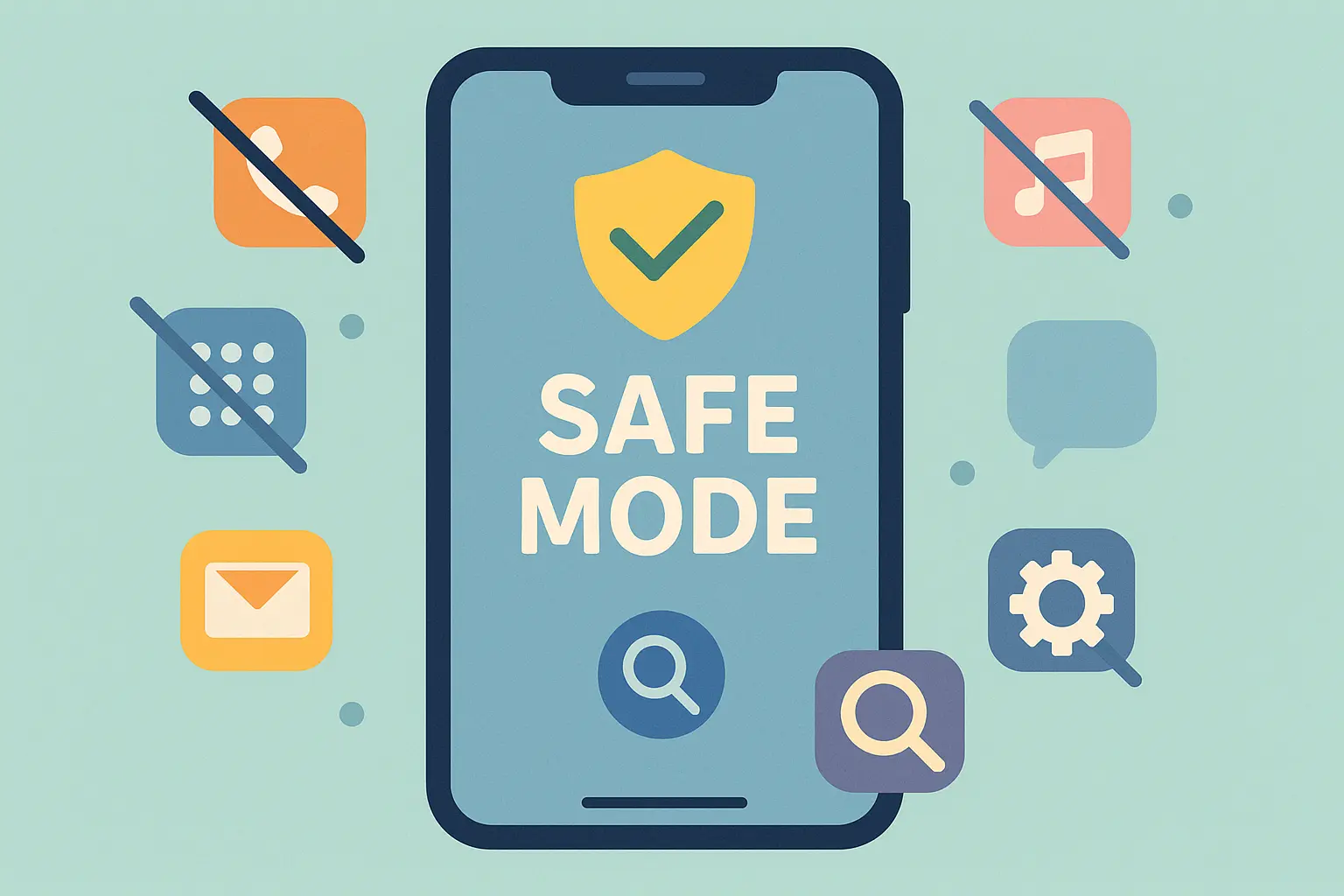
Safe Mode - Your Secret Backdoor
Safe mode lets you access basic phone functions even when locked, so you can troubleshoot without nuking everything. Most people don't know this exists, but it's a real lifesaver when third-party apps are causing your lock problems.
Getting Into Safe Mode While Locked
Many phones let you enter safe mode through button sequences during boot, bypassing third-party apps that might be screwing with your lock screen:
Power off the device
Press and hold Power until the manufacturer logo shows up
Let go of Power, immediately hold Volume Down
Keep holding until "Safe Mode" appears in the corner
Go to Settings > Apps to disable problematic apps
Restart normally to test if the lock issue is fixed
Safe Mode Entry Checklist:
☐ Device completely powered off
☐ Power button held until logo appears
☐ Volume Down held immediately after releasing Power
☐ "Safe Mode" indicator visible on screen
☐ Third-party apps disabled automatically
☐ Settings menu accessible for troubleshooting
Selective Troubleshooting in Safe Mode
Safe mode access lets you clear specific app data that might be messing with your lock screen without affecting personal files or other apps. You can uninstall recently downloaded apps or clear cache data for system apps that might be causing problems.
ADB Commands - For the Tech-Savvy
ADB is basically a way to boss your phone around using your computer - but only if you set it up beforehand. This method needs preparation and tech knowledge but gives you precise control over the reset process.
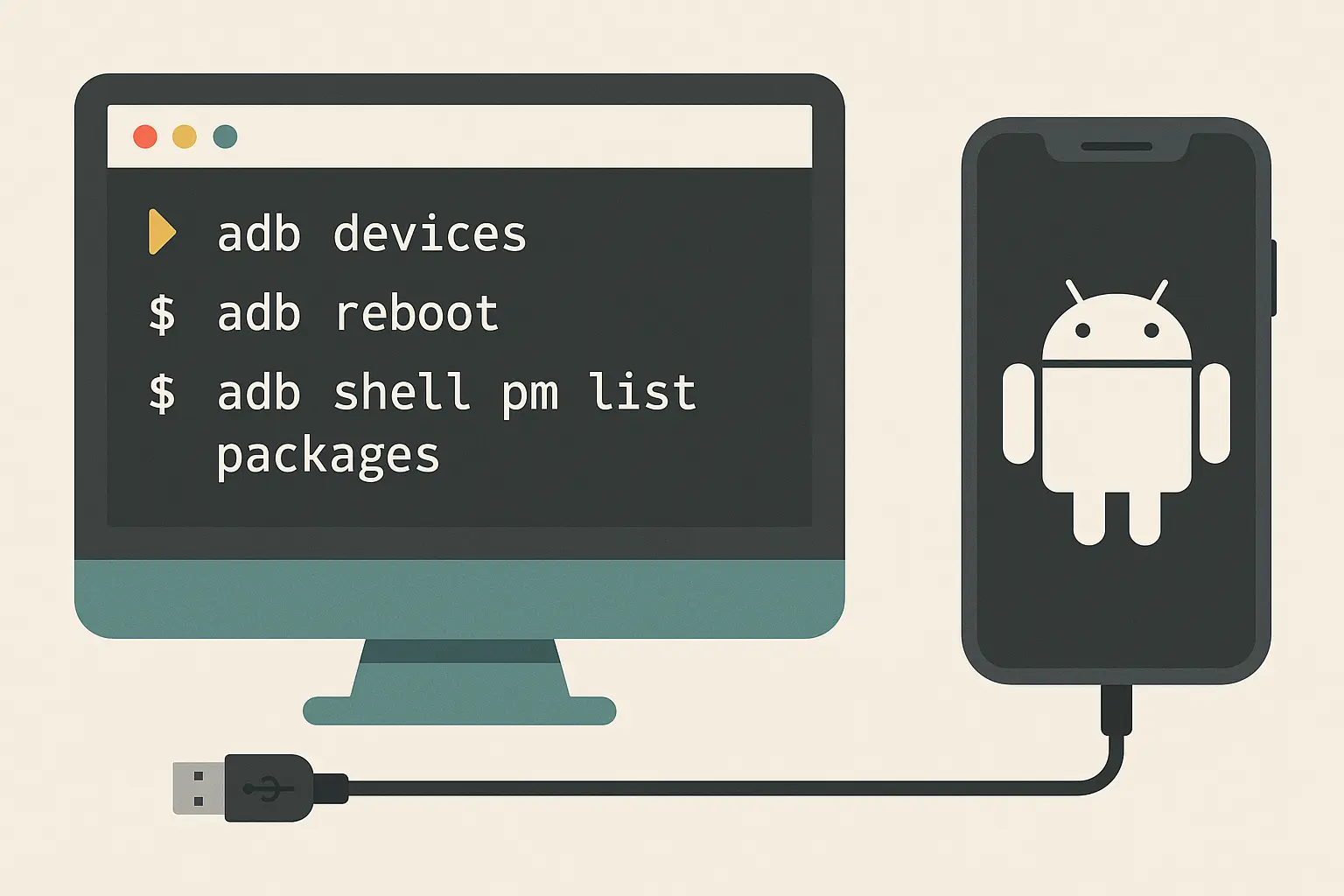
USB Debugging Prerequisites
ADB methods require you to have previously turned on Developer Options and USB Debugging. Most people haven't done this, so this solution has limited usefulness for the average person.
Command Line Reset Procedures
Specific ADB commands can remove lock screen databases, clear user data, or do selective resets while keeping some system settings and data:
Connect device to computer via USB
Open command prompt/terminal
Type: `adb devices` (make sure connection works)
Run: `adb shell rm /data/system/gesture.key`
Or: `adb shell rm /data/system/password.key`
Reboot device: `adb reboot`
ADB Prerequisites Checklist:
☐ Developer Options previously enabled
☐ USB Debugging previously activated
☐ Computer authorized for debugging
☐ ADB drivers installed on computer
☐ USB cable provides data connection
☐ Device recognized by `adb devices` command
Advanced ADB Techniques
Beyond basic lock removal, ADB can do selective data clearing, app uninstallation, and system modifications that might fix lock issues without full factory reset. These techniques need careful execution to avoid breaking your phone
Third-Party Solutions - Proceed with Extreme Caution
Commercial software and professional services claim they can unlock Android devices, but these come with sketchy success rates and serious security risks. Know what you're getting into before throwing money at the problem.
Professional unlock tools like DroidKit claim to support over 20,000 device models, covering Android versions 6 through 15, making them options for newer devices where traditional methods might fail.
Software-Based Unlock Tools
Programs like Dr.Fone, iMyFone LockWiper, and similar tools claim they can unlock phones through USB connections. Success rates vary wildly by device model and Android version, and many don't work on newer devices with beefed-up security.
My friend Jennifer tried three different unlock tools on her locked Pixel 6. The first two were complete duds, while the third (DroidKit) actually removed her forgotten pattern in 15 minutes. Catch? She had to pay $39.95 for the software and lost some app data, though her photos and contacts survived.
Professional Unlock Services
Local repair shops and specialized services can do hardware-level unlocks or data recovery, usually at higher costs but with better success rates for complex situations. These might be worth it for devices with important data you can't lose.
Security Risks You Need to Know
Third-party solutions can compromise your phone's security, void warranties, or expose your personal data to sketchy companies. Some tools install backdoors or malware, making your device less secure even after successful unlock.
Getting Your Life Back: Post-Reset Recovery and Future-Proofing
Successfully resetting your locked phone is only half the battle. Now you need to recover your data and set things up so this nightmare never happens again.
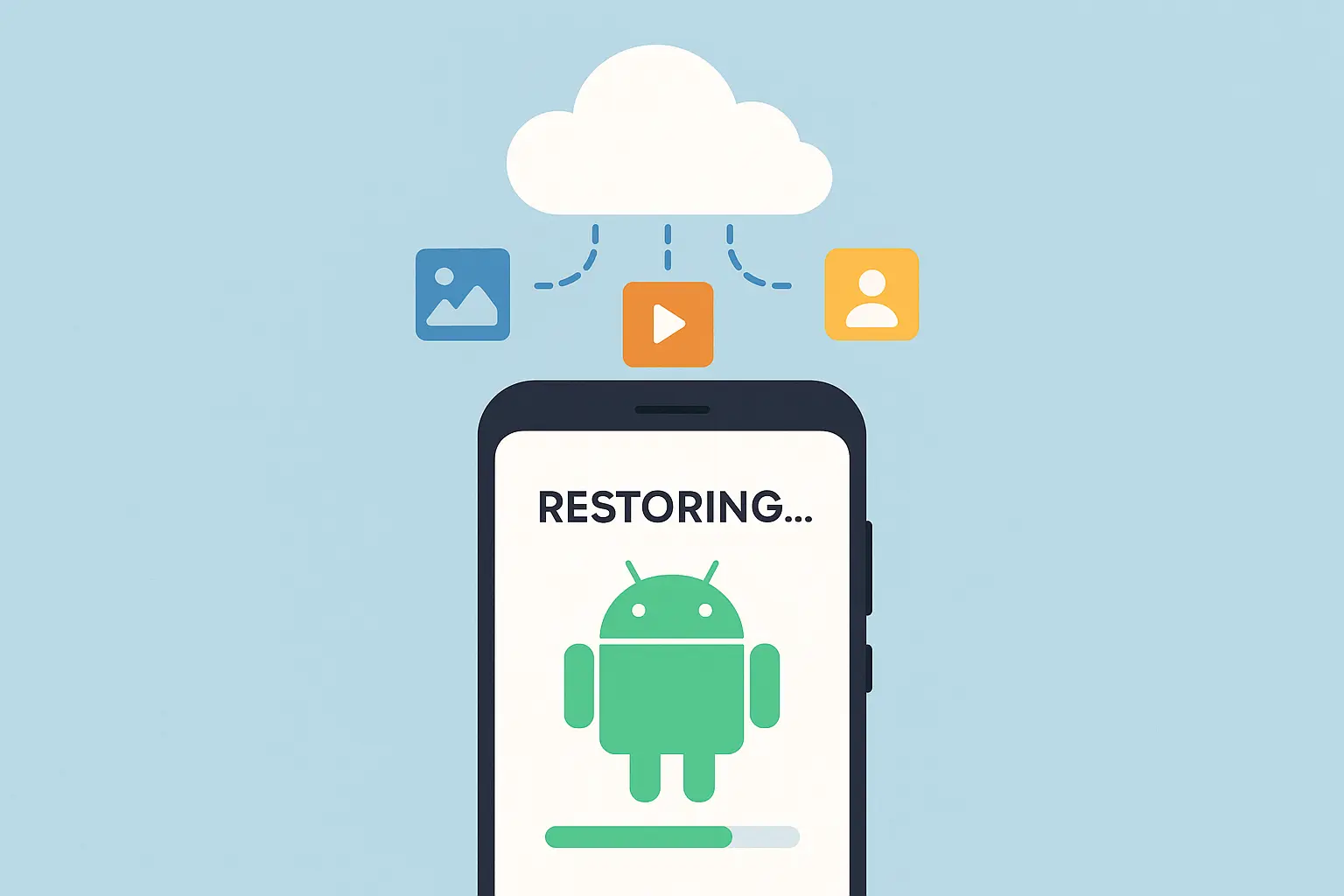
Data Recovery - Salvaging What You Can
The post-reset setup process determines how much of your old life you can get back and how quickly your phone becomes useful again. Smart recovery techniques can restore most of your important stuff automatically.
Google Account Restoration Magic
During initial setup, signing into your previous Google account automatically restores contacts, calendar events, app installations, and settings that were synced to the cloud. Here's the best way to do it:
Connect to Wi-Fi during setup wizard
Sign in with your previous Google account
Accept restoration of apps and data
Wait for automatic app downloads to finish
Manually restore photos from Google Photos
Set up security settings and biometric locks again
According to PhoneCheck's analysis, the factory reset process takes "a few minutes" to complete, but full app restoration and data sync can stretch the total recovery time to several hours depending on how much stuff you had and your internet speed.
Manual Recovery for Everything Else
Data that doesn't automatically restore through Google services might be recoverable through SD card transfers, computer backups, or third-party cloud services like Dropbox or OneDrive. Check these sources before assuming your data is gone forever.
Prevention - Never Get Locked Out Again
Setting up solid backup systems and alternative access methods prevents future lock situations from becoming total disasters. Smart prevention saves you time, stress, and data loss down the road.
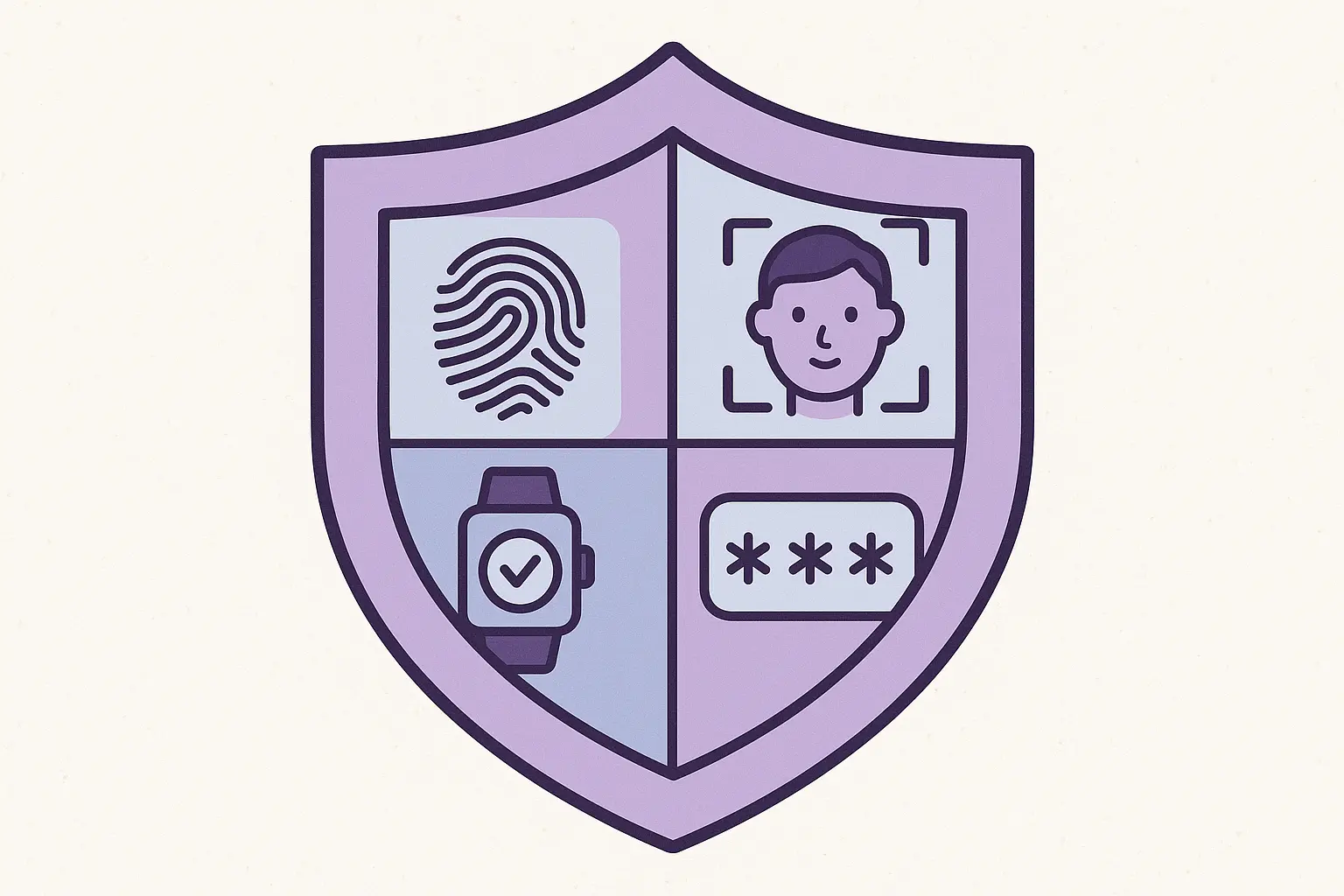
Multi-Layer Backup Strategy
Don't put all your eggs in one basket. Combine Google's automatic backup with manual file transfers and third-party cloud services to create multiple safety nets for future reset scenarios.
Complete Backup Checklist:
☐ Google Photos automatic backup enabled
☐ Contacts synced to Google account
☐ App data backup activated in Settings
☐ Important files copied to external storage
☐ Third-party cloud services configured
☐ Recovery email and phone updated
☐ Backup codes saved securely
Smart Access Configuration
Set up multiple unlock methods (fingerprint, face, voice, trusted devices) and make sure your Google account recovery options are current. This gives you multiple ways to get back in if one method fails. Update your recovery email and phone number regularly.
With Factory Reset Protection built into most Android phones, having current Google account credentials becomes even more critical since you'll need them even after a factory reset to complete device setup.
Smart Lock Features That Actually Help
Configure Smart Lock for trusted locations, devices, and faces to reduce the chances of being completely locked out while keeping reasonable security. Your home Wi-Fi, car Bluetooth, or smartwatch can keep your phone unlocked in safe environments.
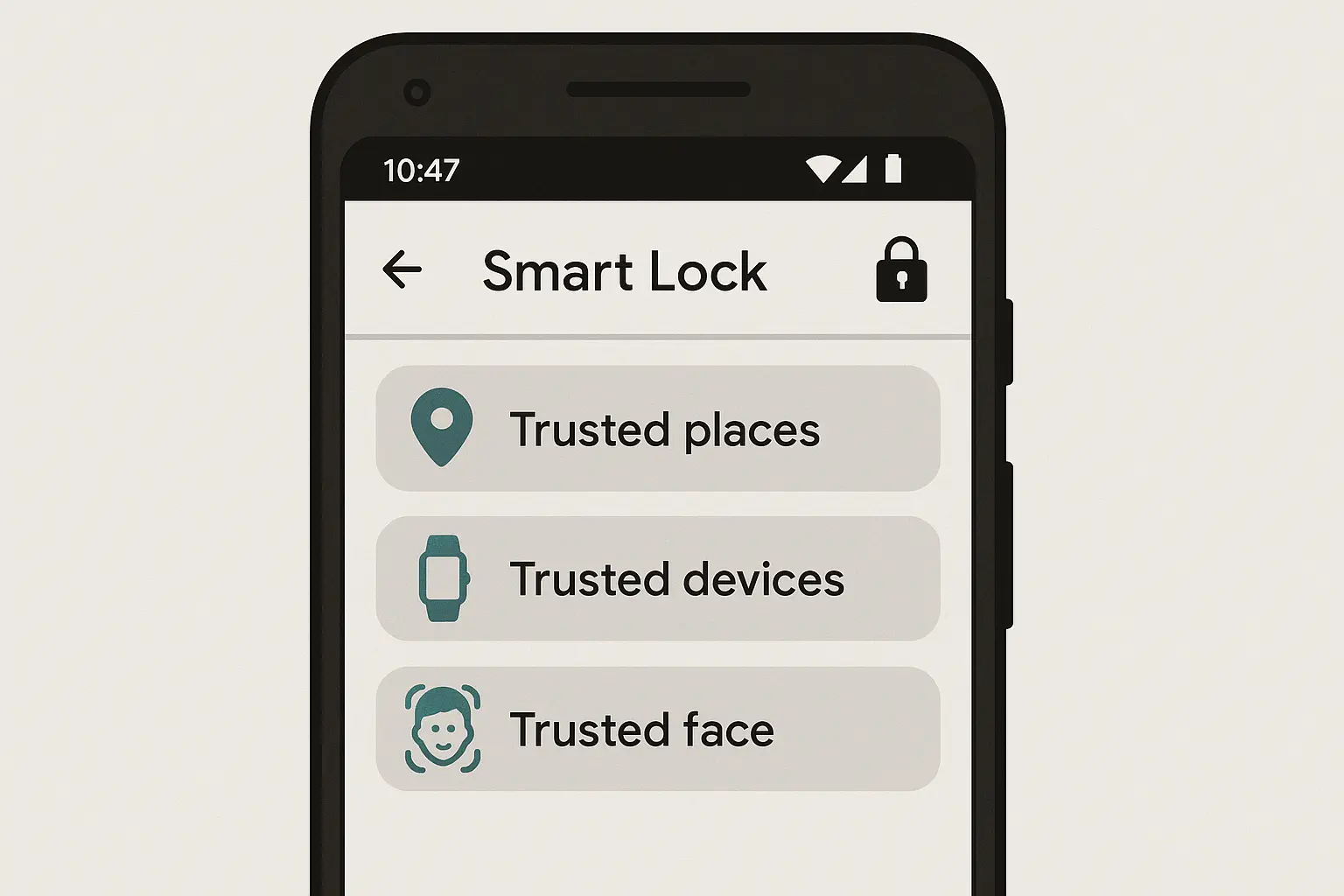
Final Thoughts
Getting locked out of your Android phone sucks, but it's not the end of the world. You've got multiple proven methods to get back in, from simple hardware button combinations to Google's remote reset. Start with the easiest solutions before moving to more complex alternatives.
Prevention beats recovery every time. Set up multiple unlock methods, keep your backups current, and protect your device from physical damage that causes many lock situations. Your future self will thank you when you're not frantically googling reset instructions at 2 AM.
Bottom line: this sucks right now, but it's fixable. Pick a method and give it a shot. Take a breath, work through these methods systematically, and you'll be back to normal phone usage - hopefully with better security practices in place.







